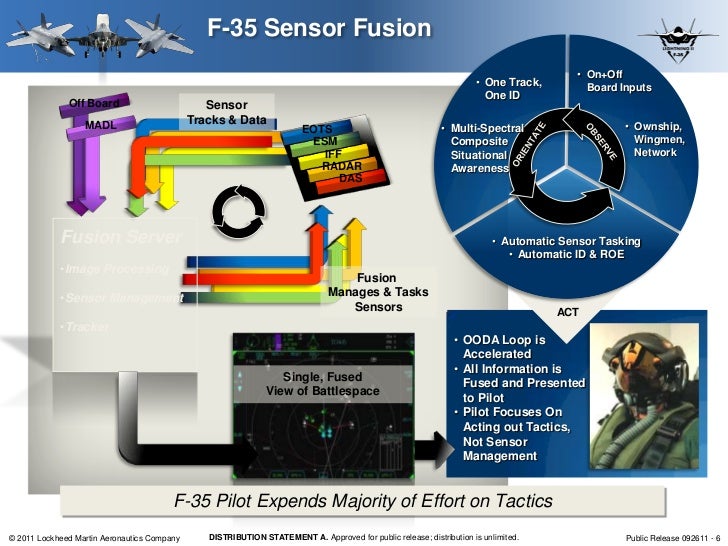
AESA + RWR + EOTS + DAS + CNI + HMDS
The entire sensor architecture of F-35A is ELECTRONICALLY FUSED to begin with.
Recommended:
https://sldinfo.com/2013/10/the-imp...5th-generation-fighters-on-combat-capability/

F-35A supercruise =
MACH 1.2
Su-57 supercruise =
MACH 1.3 (with latest engines which are undergoing trials at the moment)
F-35
C have Thrust Vectoring to facilitate its vertical take-off and landing capabilities.

Recommended:
https://foxtrotalpha.jalopnik.com/watch-the-f-35-pull-off-some-mighty-impressive-flying-m-1831751308
Pilots of F-35 have reported 9+ g turns and much more.
"A former F-15C instructor pilot said he consistently beat his former jet in mock dogfights." - NI
Link:
https://nationalinterest.org/blog/b...1-air-force-pilots-who-flew-stealth-jet-34927

These figures are
understated for F-35 in public domain.
Russian jets are
twin-engine designs on average and will be impressive in these aspects accordingly, but do these make much difference in warfare?
Consider
French Mirage F1 for reference.
Maximum speed = 1,453 MPH
Maximum ceiling = 65,615 feet
And what became of them in the Persian Gulf War (1991)?
Source:
http://www.rjlee.org/blog/2012/04/08/the-mystery-of-wichita-103/
American jets made shot work of them during aerial engagements.
Russian jets are
twin-engine designs on average and will have an impressive ferry range accordingly; this is in line with Russian doctrine of warfare. Just take a look at Russian geography.
Baseline ferry range of F-35 variants is
2222 KM which is really impressive with a single engine. Equip F-35 variants with CFTs and expand its ferry range much further.
Again, this prove nothing.
Russian jets are distinct designs on average and their maneuverability characteristics also vary accordingly.
3D models? Oh well....











 The only way the flying brick F-35 can supercruise if it drops all its weapons and fuel.
The only way the flying brick F-35 can supercruise if it drops all its weapons and fuel.